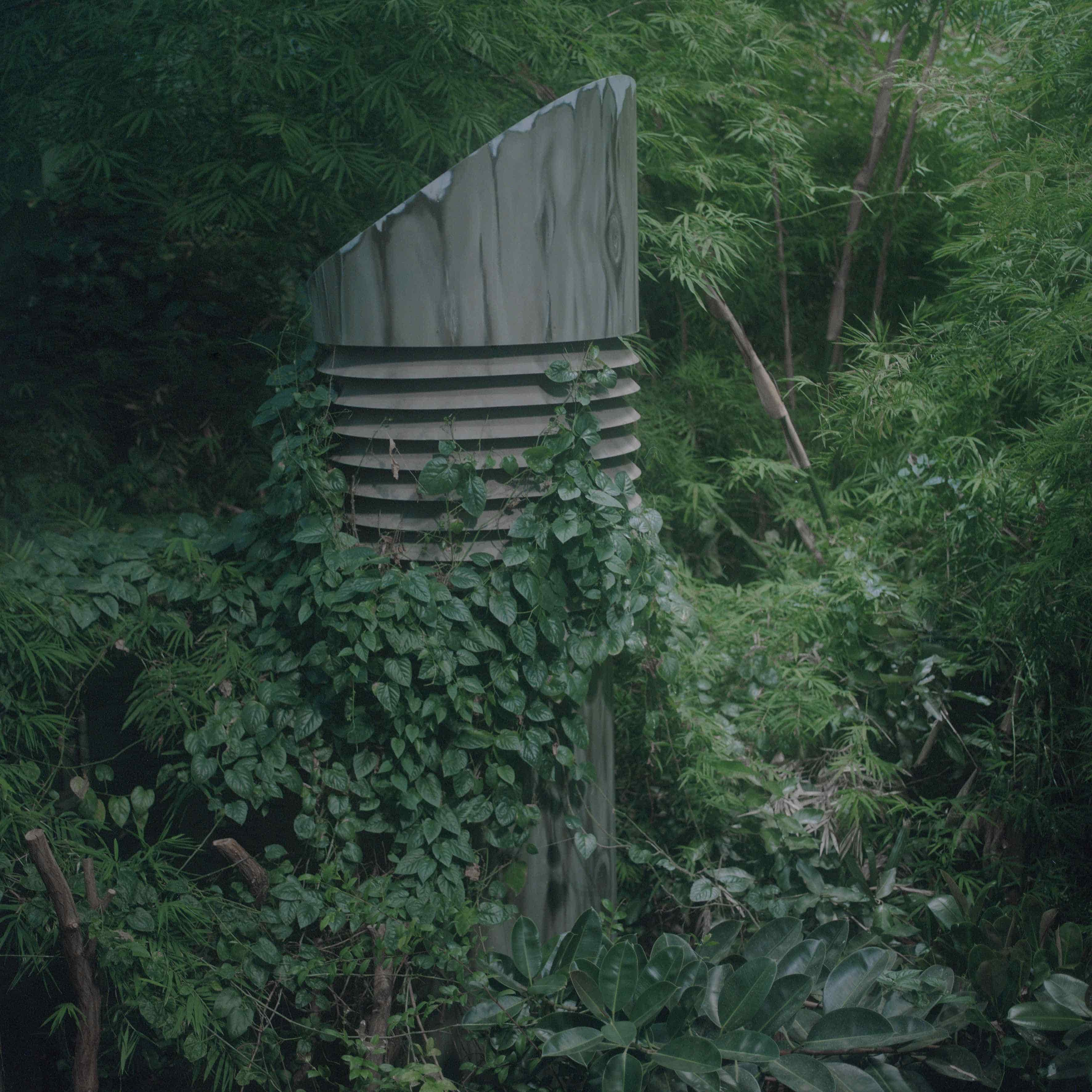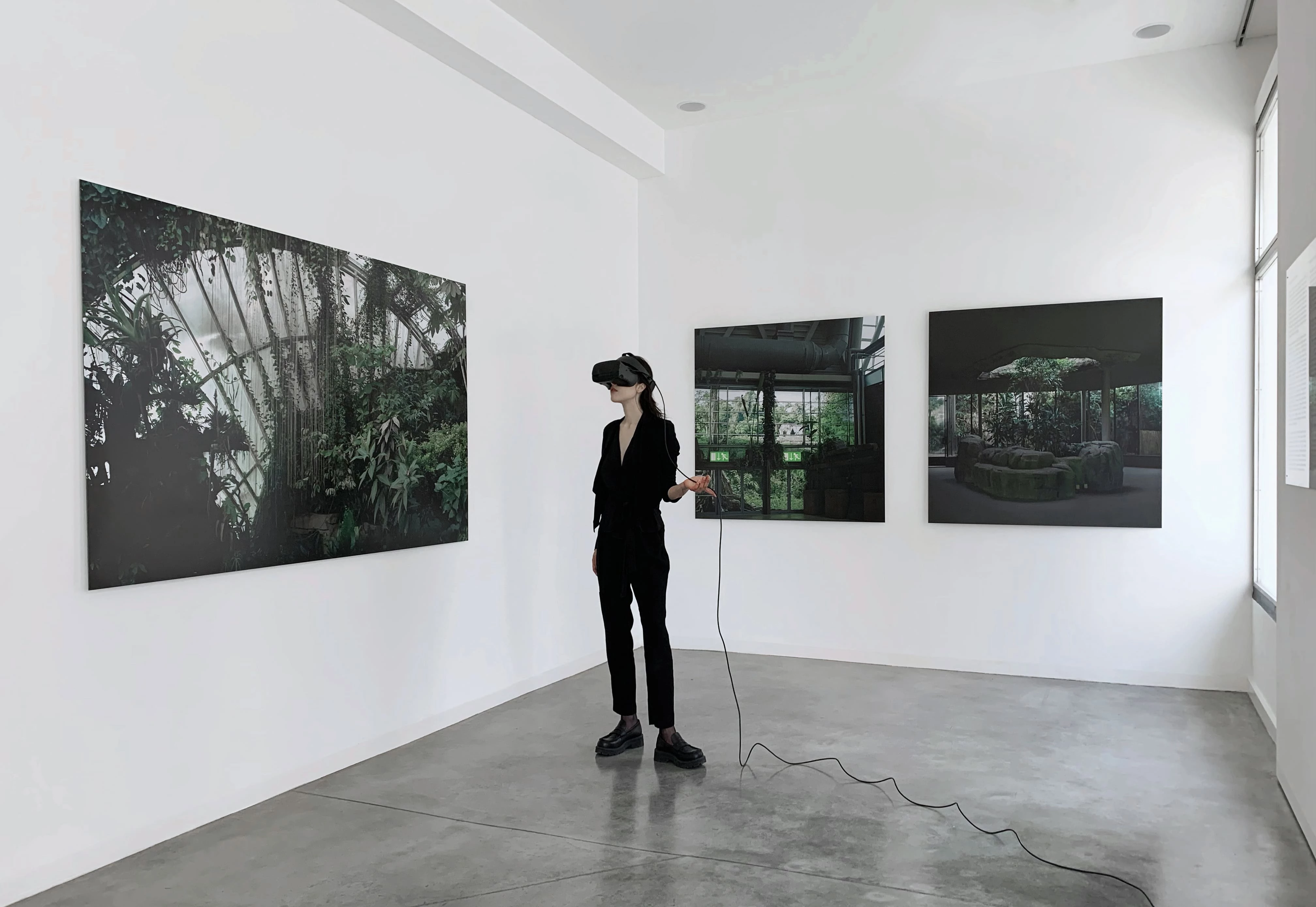
- Date
- 04 DECEMBER 2023
- Author
- DAVIDE ANDREATTA
- Image by
- EVELYN BENCICOVA
- Categories
- Monday Spotlight
Exploring Tomorrow's Visions: The Perspective of Natalia Evelyn Bencicova
Tackling photography as an expanded medium that operates at the intersection of many different technologies, Natalia Evelyn Bencicova’s work investigates the many different ways in which we trace the line between fact and fiction.
In her creative journey, technology appears as a narrative tool with the actual ability to have a social impact imagining alternative scenarios to the one collectively imposed by norms and prescriptions.
Simulacra, ecology, myths and the ever-evolving relationship between humans and machines are only a few of the themes in which her artistic practice delves into.
Good morning Evelyn and welcome to Red Eye! Can you tell us more about your journey in the world of art and photography?
Good morning and thank you so much for inviting me for a talk, let's start then:) As you may know, my background is in photography. However, I always speculate that one's creative journey usually starts earlier than it reaches a point in which thoughts and visions materialize. I was developing ideas or even approaches, which might be today called my visual language long before I picked up the camera. In imagination and writing, inventing stories while attaching meaning to every detail and gesture, that became carriers of it now on a visual plane. If I go further to memory, one of my first tools of expression has been writing, and inventing stories. I started photography around 18 years old after eye surgery and with enough money saved to buy a camera. This was in a pre-smartphone time which is maybe important to note. There was no art background or encouragement in my childhood, in a working-class family in Slovakia, and especially in the generation of my parents, art or photography was seen as a hobby, not a choice of profession. From the beginning, I needed to use photography as a source of income, which continued into my fine art studies, but most importantly I always did personal projects, in my free time, involving friends as models and collaborators, and only much later I learned that these will be seen as “artworks”. I always had a bit of an Imposter syndrome, only hoping to be accepted by the world of art that I looked up to but did not feel nor expected to be seen by it as belonging to the discourse. Maybe because I came from such a different world, bridging those worlds became my main task, aiming for works that are at the same time intellectual and meaningful but also allow access to people without an art education, using aesthetics as a tool for attention, that leads to deeper contemplation of what is beyond visible. In 2019 I had what might be called a “photography crisis” feeling limited by this medium which started to define me and the need and desire to experiment with different ways of expression became irresistible. Always working digitally with staged-like, slightly surreal atmospheres I naturally turned to computer 3D and VR which enabled me to explore moving images in quite an independent manner, free from the constraints of reality and film production budgets that we just simply did not have. It was like an entirely new world opened to me, with so many more narrative tools that could be used conceptually. This was only made possible through collaboration, which I consider the most important aspect of my work and development, and continues to be to this day.

Photography has become an expanded medium operating at the intersection of many different technologies and constantly renegotiating the line we trace between fact and fiction. What elements does the advent of AI introduce to the discussion?
"The real," says Carl Gustav Jung, "is what works" which I find an interesting quote to start with. Think of how much of the reality that we know is nowadays perceived partly or even exclusively as images. These images may capture it, but to capture is still to “frame” through a certain angle or a “lens” – using the metaphorical rather than technical meaning of the words – that is not entirely objective. And so the image taken is only a fragment of reality, the part that was chosen to be seen, next to all that remains unseen, next to the complexity of reality around it, or the reality we attach to it in the moment of seeing the picture.
The technique of production does not influence the artistic value of an image for me, nor the emotional impact, though it does influence the notion of truthfulness that has been attributed to images previously.
Without doubt photographs (lens-based and generated) are blurring the line between fact and fiction more than ever and we shall be aware of this as an exciting possibility as well as a potentially dangerous play.
I always worked in a staged manner, interpreting and re-imagining rather than documenting the event or certain theme. In this way, I always questioned the notions of reality and perceiving an image, creating “fiction based on truth” and rather giving questions than answers about the way of seeing. Art as such shall train our intelligence, also that non-artificial one to look and think beyond what is visible.
The advent of AI in this sense exposes the fragility of images yet again. Not everything “that works” for our eyes and minds can be taken for granted without further questioning. Images are there to be analyzed, not just purely consumed if we aim to seek truth and detect deception.
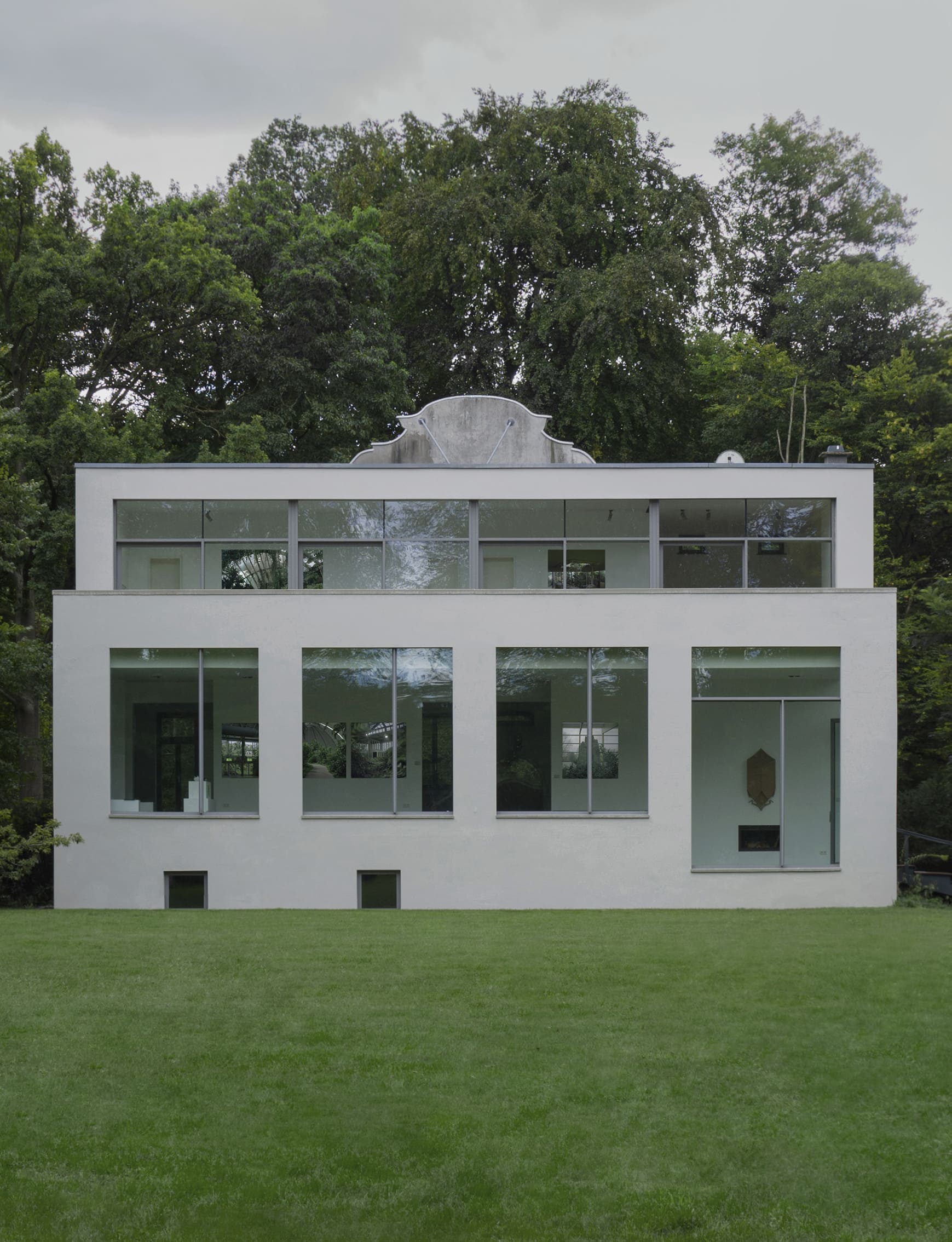
With the Turing test as its narratological frame, your project Artificial Tears investigates the difference between humans and machines asking if the rigid distinction we delineated can still hold. Funny enough this distinction doesn’t emerge organically from the relationship between the two; it is always the human part of the equation the one imposing this separation a priori. And yet, as many authors pointed out, a machine is in many senses way more alive, modularly adaptive and explorative than we are. Why is this divide so hard to die?
The human part is imposing the separation in order to remain in the position of control while giving up the subsequent sense of responsibility. Yet, in the hyper-connected world that we experience and ever more enhance it is increasingly important what we teach and learn from each other – within human exchanges but also beyond that. The problem occurs when we end up copying our most negative traits, which is the case “Artificial Tears” aims to speak about. The photographic part of the project, dealing with possible differences between humans and machines, exposes mechanic behaviors we adopt, trying to individually fit into societal norms. The VR part focuses on the notion of a servile female machine in arts and technology (looking at behavior or more exactly the design of AI voice assistants) which reproduces harmful preconceptions of forced obedience and inequality. In both ways a toxic pattern is in play, continuously repeating - the pattern of acting and judging without values that humans can take the biggest pride in - thus being conscious and able of empathy.
To put it simply: what we teach our ever-more intelligent tools is what will be reflected to us and coming generations. This is why common (maybe well-reasoned) fear of what that will be says more about humanity than the technology we use. The Test (ref. Turing Test) poses a challenge not only to the one who answers the questions but also to the one who asks them.“What we want”, said Turing In a lecture in 1947 “is a machine that can learn from experience”. Can we change the wrongful programming of the past into different actions? Can we learn from history so we are not doomed to repeat previous faults?
The conversation between humanity and technology, between its otherness and likeness can remain fruitful as long as it favors collaboration over competition, and intelligent reasoning over automatic assumptions as we will continue growing together.
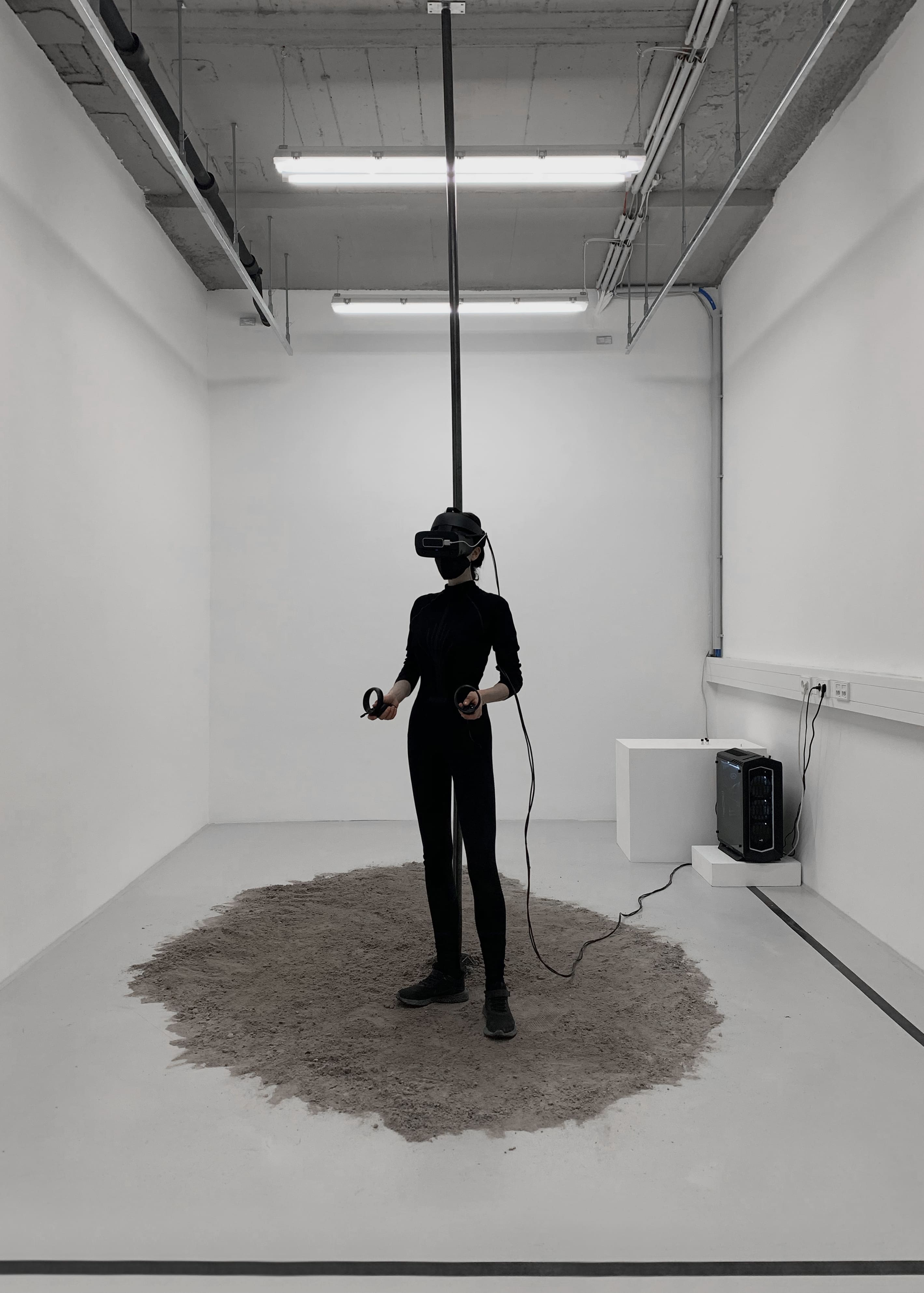
Atlantis represents a cautionary tale of an ancient culture destroyed by nature, whereas your project Anti-Atlantis imagines a scenario where the future landscape (future as landscape, one might say) is destroyed «by the human culture of excess». This scenario has an actual name: Anthropocene. We have learned by now that fiction is action, but I would like to know how, in your view, fiction can serve as a tool for altering the spiraling trajectory of our present.
Fiction has always had the role of information delivery through symbols or teaching a lesson with a story. The experience in fiction, if it is powerful, can transform us, and we can transform the world around us, at least on the scale of our actions. Since early times people have imagined (e)utopias and dystopias as a critique of the current system, expressing hopes for possible improvement.
Anti-Atlantis is a multisensory VR work that involves smells, atmosphere temperature, and 3D sound. The reason for such a cross-sensory approach has been our belief and underlying study that aims for embodied experience in virtual space, closest to real going through the event, which works strongly with the viewer's perception and can induce therapeutic or transformative state and effects.
As you mentioned, the harmful consequences of the Anthropocene are not unknown to us, yet the damage continues to grow. We were wondering if feeling or living it on our bodies can mark even a slight change of this ignorant behavior becoming a new norm.
Anti-Atlantis deals with subtle sensing and uncovering. Analogically to processes in the environment, changes happen slowly, and gradually. The process of uncovering is a symbolic action, forcing one to look at what is unfolding already everywhere around us. It exposes the trash covering those “less-curated” beaches of the world, it continues into the air and under the water, leaving us at the graveyard of consumption in the moment of contemplation, panic, or grief yet with the knowledge that these stories can still be reversed.
In Anti-Atlantis the damage returns to the viewers, leaving them floating in hopelessness but also a possibility that truly arises only after the removal of the headset. The experience still aims at reality, just seen differently through fiction: in the world, there is still the chance for change, in which we all are active participants. The artwork asks how we choose to act and what is the world we want to wake up into.
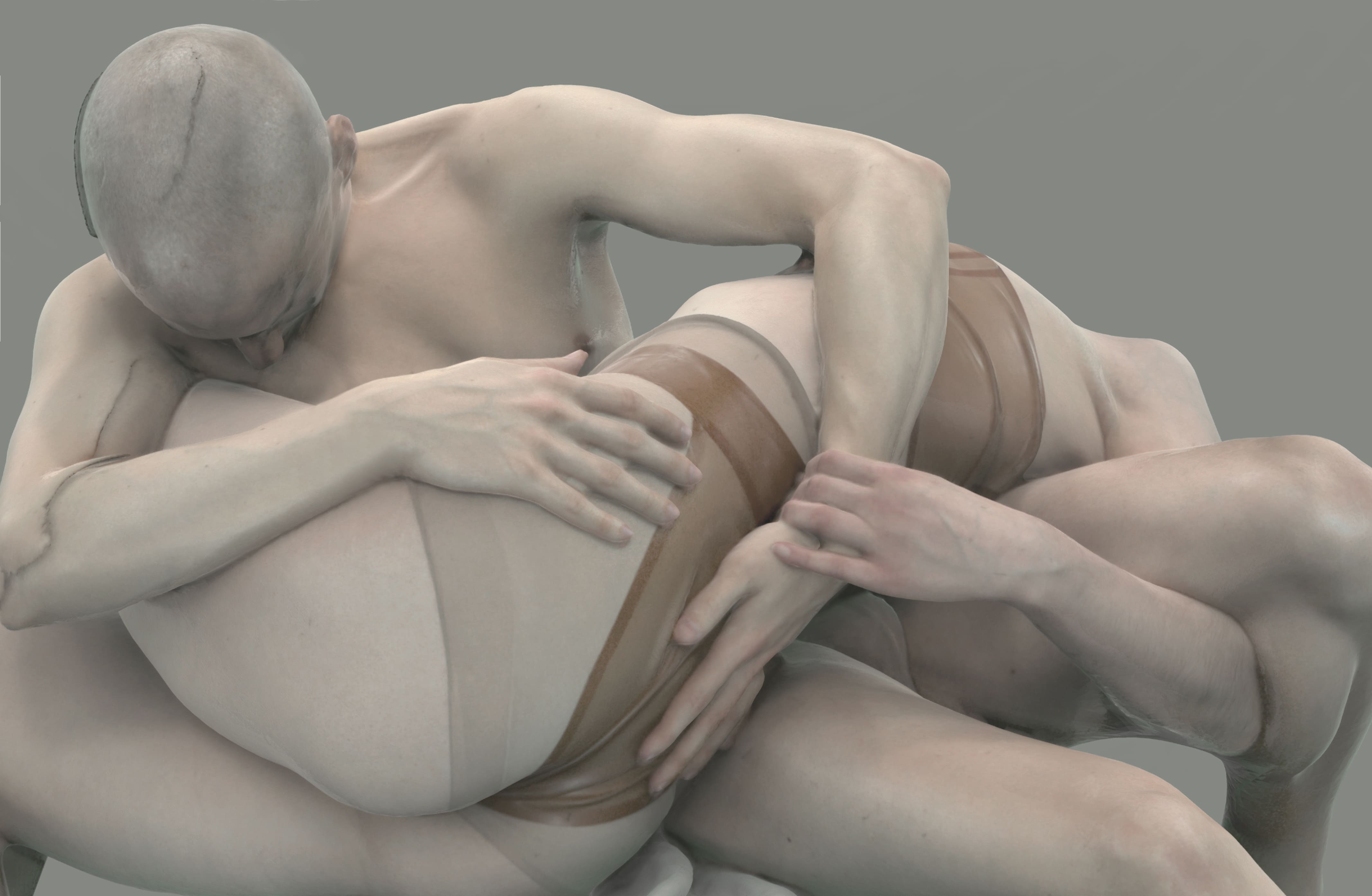
In your audio-visual project Aether, created in collaboration with Samson G Balfour Smith, you reimagine the origin story of Abrahamic religion through the lenses of Eve, now freed from the burden of sin, shame and guilt.
The narrative is developed «with body, voice, sound, space, movement and graphic sound technology in the 3D realm» and it is captivating how one of the foundational myths of Western society is reimagined thanks to the most up-to-date technologies altering its narrative structure. Can technology be narratologically retroactive? Can it help us reclaim myths and distance them from their often patriarchal frame?
I believe that it can play a vital role. This is the aim that “O” Chapter of Æther is trying to make with re-telling or more precisely re-translation of Genesis, the text that lays a foundation for Abrahamic religions but also several preconceptions still present in society to this day. The story of Adam and Eve in Eden, and their fall into eternal punishment, breaking the order of newly found but one and only God.
Who does this story, condemning disobedience in the form of curiosity, especially when attributed to a female figure serve? Proving the obvious, I want to return to your question of technology. Æther looks at it as techne/logos in observing language as a tool for shaping some of the more persistent myths translated into lived experience. Questioning and reshaping, or as you say reclaiming them is our task when we aim for a closer look at this well-known origin story with uncertain origins, that could have possessed entirely different meaning from the one attached to it by those with the power of writing the history based on their needs. Most symbols used in Genesis as well as in Æther (like the tree of life/knowing or snake/serpent) come from pre-abrahamic times, taken from ancient beliefs and worships that were re-used further by monotheism with meanings radically changed and twisted often to the opposite direction in service of a new reign. What could not be destroyed needed to change shape to survive, to become encoded. Interestingly, looking at the meaning of Hebrew words, quite a different story (or at least the possibility of it) comes through, to the surface. Adam as earth, humanity and Eve as life, eating as perceiving, fruit/information, and the multi-layered symbol of the serpent – pharmakon: poison and a cure. This is where the retranslation of Æther departs from when telling the story of human life in the fall from the guided garden, fall from innocence into knowing one-self, painful as well as freeing separation.
In the second layer of this tale about consciousness, another one emerges – the one of Eve transformed from sinful, shameful, and guilty into the hero of the story. She has been and continues to be the one most harmed by it. What sets her free is the knowledge that gives her the courage to act and to question the construct that kept her constrained, physically, socially, and mentally by someone else's control, fear, or imagination. She finds a voice - a tool to express from her perspective. What gives us the possibility to retroactively change some of the deeply rooted narrative structures is our access to information and exchange. As we know, even 100 years ago women did not have this option, and equally they do not have it in some parts of the world right now. The possibilities and not only those tied to gender are widely disproportional. There are many stories to be told and retold and, hopefully, the time has come for the world to listen.
The work is currently on view at Fotografiska Berlin as part of the Nude show.
How do you see your creative practice evolving?
To be completely honest with you I don't know, or at least I'm not sure. I somehow feel like expecting, or wishing specifically can become a limitation. The only thing I know is that I want to be growing deeper, into topics that matter to me. I would like to work on more long-term projects with bigger-scale installations and performative techniques. This is new ground for me, which is always a chance to learn and discover unexpected ways of working but also thinking. What I'm interested in is the experience, the rare moment of embodying an idea in the matter or happening that others can feel, interpret, and carry in their mind, in memory or react to it.
Any future projects you can disclose some details about?
From the ongoing project SimulcRaum, the investigation of constructed spaces in their like-ness and fake-ness in imitating nature, as well as above mentioned Æther, with the next chapter “I” are still in progress. At the moment we are starting to work on research for a very special project on the Greek island Lesvos together with the refugee community and supporting organization focused on movement and arts. However, we are only in the beginning stages of learning from our future collaborators what is the right way to approach and grasp the topic.
